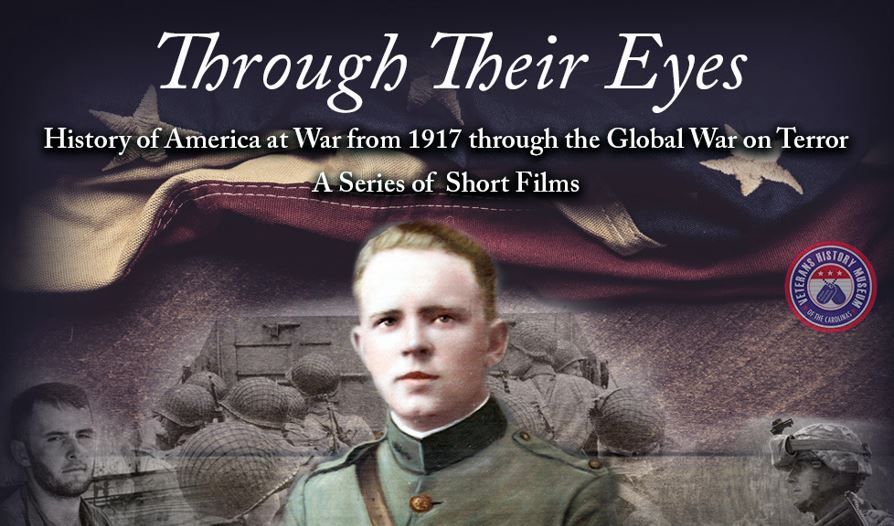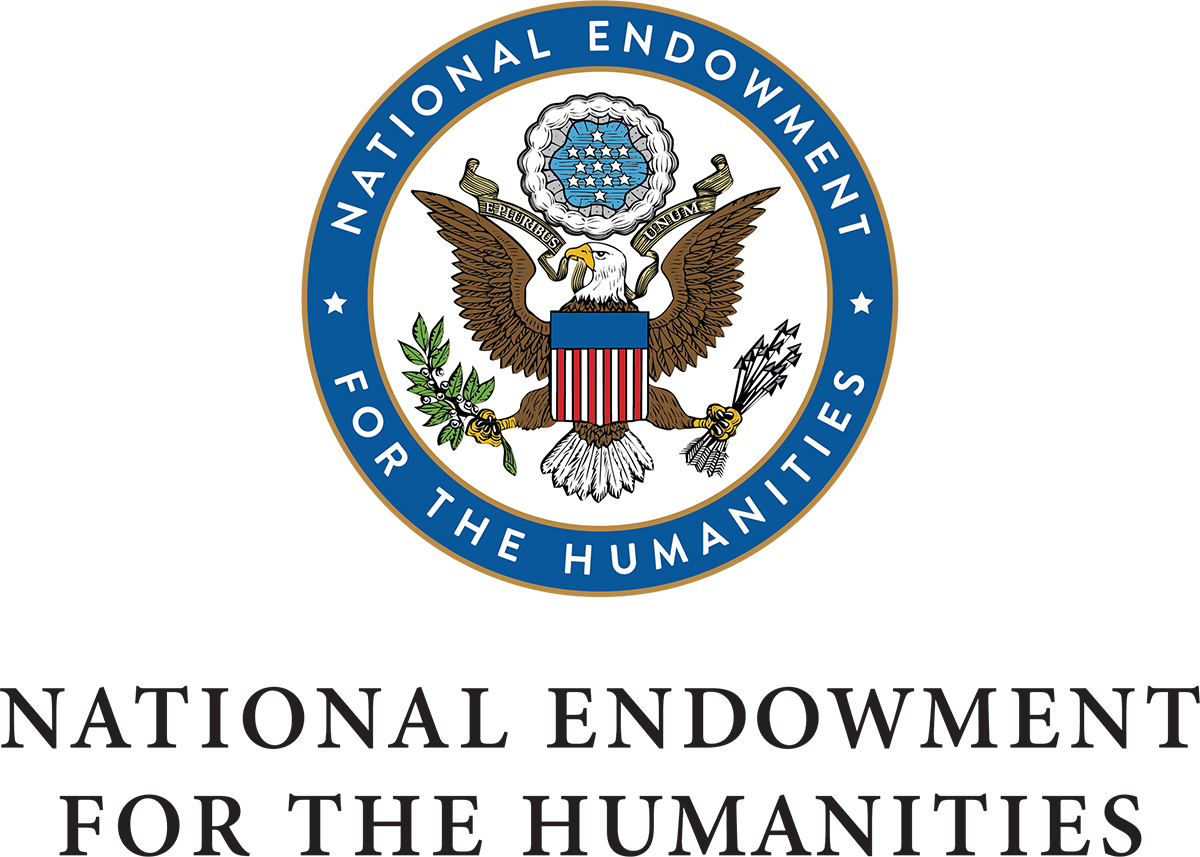Have you ever seen a Ken Burns documentary? Using a signature style known as the Ken Burns Effect, his many American history documentaries, including The Civil War (1990) and The Vietnam War (2017), often utilize a series of panning and zooming effects to enliven still imagery. This was an inspiration source for the recent documentary film from the Veterans History Museum of the Carolinas, Through Their Eyes.
In 2021 the Veterans History Museum of the Carolinas (VHMC) was awarded a North Carolina Humanities Large Grant to assist in creating a series of short videos featuring American military history, stories of veterans from the Carolinas, and a variety of the museum’s 5,000+ artifacts. Seen as short 4–5-minute films throughout the museum’s galleries, and also presented as a combined, 45-minute documentary, this touching film project provides a historical perspective and a learning experience for young and old viewers. Through Their Eyes is available to watch online at: https://vimeo.com/794565484 or you can watch the full documentary below.
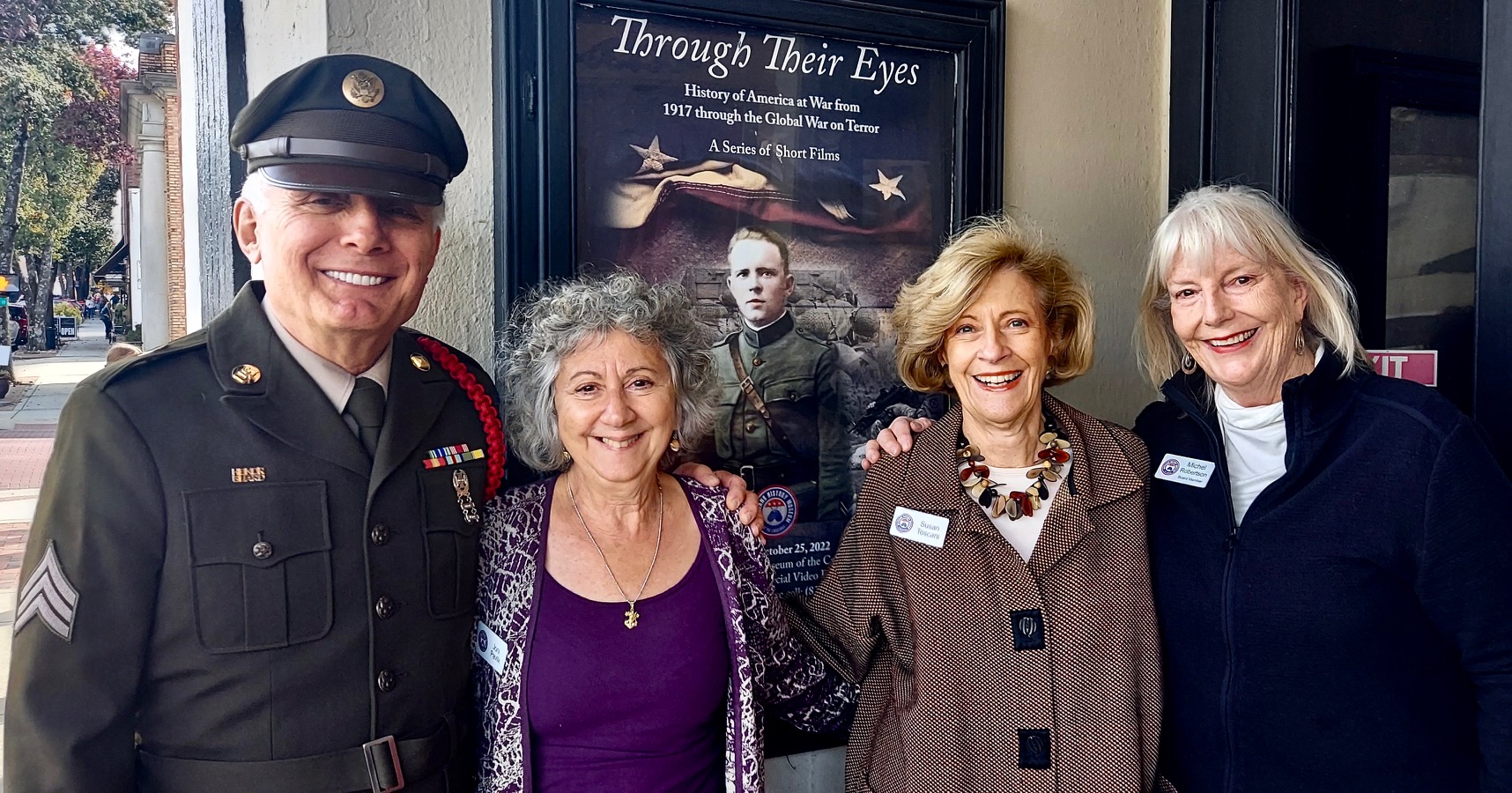 We connected with Michel Robertson, VHMC Board Member and Through Their Eyes Project Director, and Carl Newman, VHMC Board member, veteran, and Through Their Eyes Project Coordinator, to learn more about the film, the impacts war has on us, and why looking at things from a different perspective is important.
We connected with Michel Robertson, VHMC Board Member and Through Their Eyes Project Director, and Carl Newman, VHMC Board member, veteran, and Through Their Eyes Project Coordinator, to learn more about the film, the impacts war has on us, and why looking at things from a different perspective is important.
Tell us about the Veterans History Museum of the Carolinas. What can people expect to see when they visit?
Michel: We are in Brevard, North Carolina. The museum was founded by our curator, Emmett Casciato, who had an extensive collection of World War II and World War I memorabilia and artifacts. He chose to share his collection in Brevard because he loved the area and noticed that there was no other museum like this in Western North Carolina. He and two others who had collections started the museum. At first, they had tables at community events, then a room in the Aethelwold Hotel, and eventually, they wound up in the space we are in now, which was a county administrative building. At the end of the day, we are a meeting place for veterans and those who want to learn more about service.
Carl: When people come to our museum, they’re very surprised as to what we have. For example, we have a World War I weapon, one of the first machine guns, that could fire 400-500 rounds per minute. It was a game changer, and we lost a lot of men because of that, but we have that here at the museum to learn from. When visitors come in and see our exhibits, it’s an eye-opener, and now they connect even further when they see our Through Their Eyes videos.
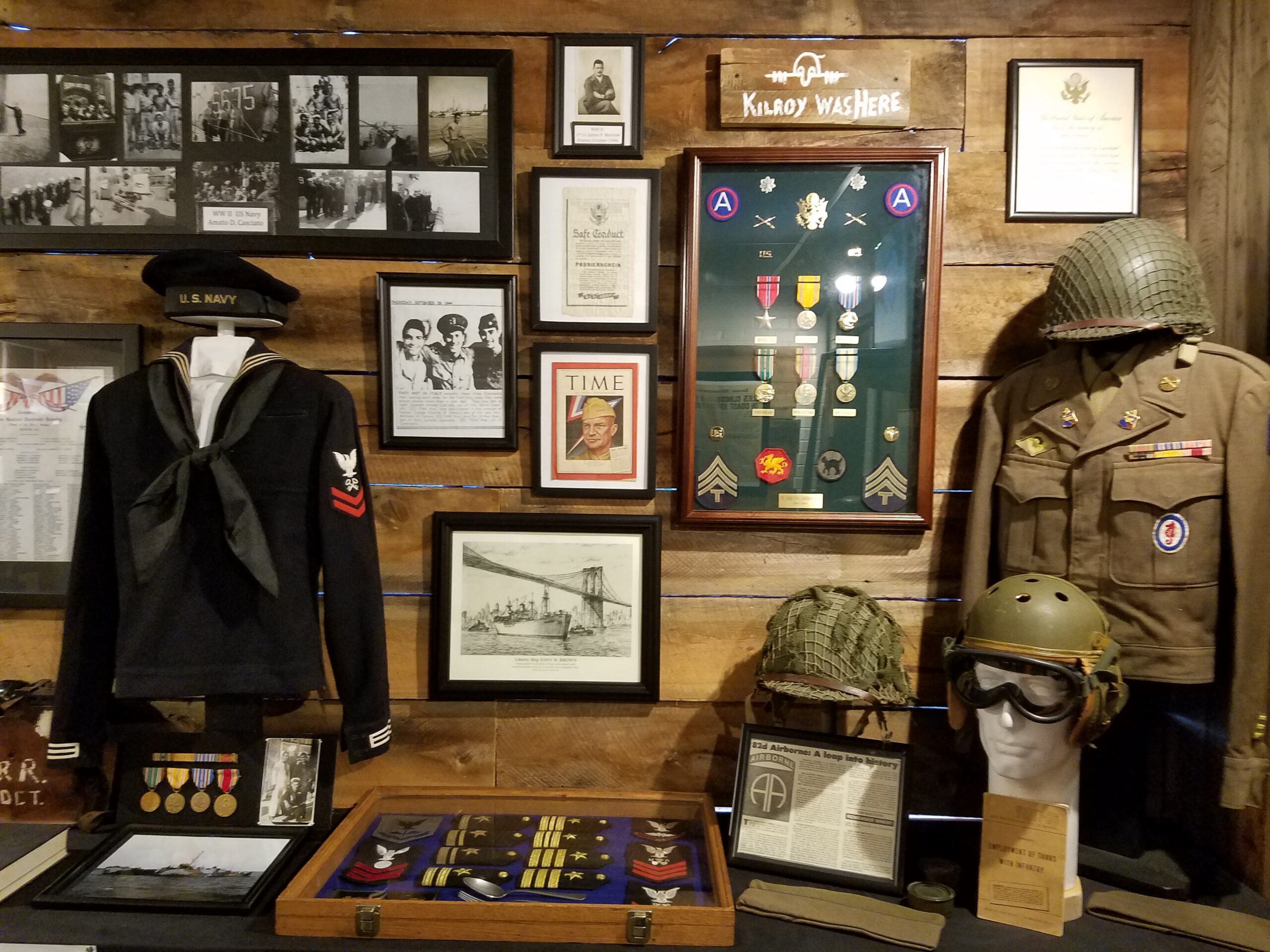 Michel: Our galleries are set up chronologically, starting with World War I and ending with the global war on terror. One of my favorite artifacts is one of our smallest artifacts; it’s a butter knife. World War I was all about trench warfare. If you watch our documentary, the first two words of our movie are, “The trenches.” Life was terrifying yet sometimes boring. To alleviate boredom, soldiers would use spent artillery shells to carve beautiful pieces of art. This butter knife, part of our trench art collection, is made from a brass shell, inscribed with the word “Verdun”, which was one of the bloodiest and most horrifying battles of World War I. As we say in the film, soldiers created items of beauty from the detritus of the battlefield.
Michel: Our galleries are set up chronologically, starting with World War I and ending with the global war on terror. One of my favorite artifacts is one of our smallest artifacts; it’s a butter knife. World War I was all about trench warfare. If you watch our documentary, the first two words of our movie are, “The trenches.” Life was terrifying yet sometimes boring. To alleviate boredom, soldiers would use spent artillery shells to carve beautiful pieces of art. This butter knife, part of our trench art collection, is made from a brass shell, inscribed with the word “Verdun”, which was one of the bloodiest and most horrifying battles of World War I. As we say in the film, soldiers created items of beauty from the detritus of the battlefield.
How did Through Their Eyes come to be?
Michel: Working with North Carolina Humanities was an excellent experience. It was the first time the museum applied for a grant of this size. For almost all of 2020, our doors were closed due to COVID. Our board realized, as did many other museums, that we needed to respond so that, should this ever happen again, the public could still experience the history and the marvels of our museum. So, for each of our galleries we decided to make Ken Burns-style videos that tell the stories of war. Through Their Eyes highlights the three components of our mission: to honor veterans, educate the public, and preserve historic artifacts. After outlining our ideas, we met with our video producer, Real Digital Productions of Brevard, and a consulting Army general. As we walked through the exhibits, the general said to us, “I’m going to look at this project a little differently than others might.” We said, “Why is that?” He said, “I’m going to look at it through a soldier’s eyes.” After that comment, we understood that this project needed to be more than just documenting artifacts.
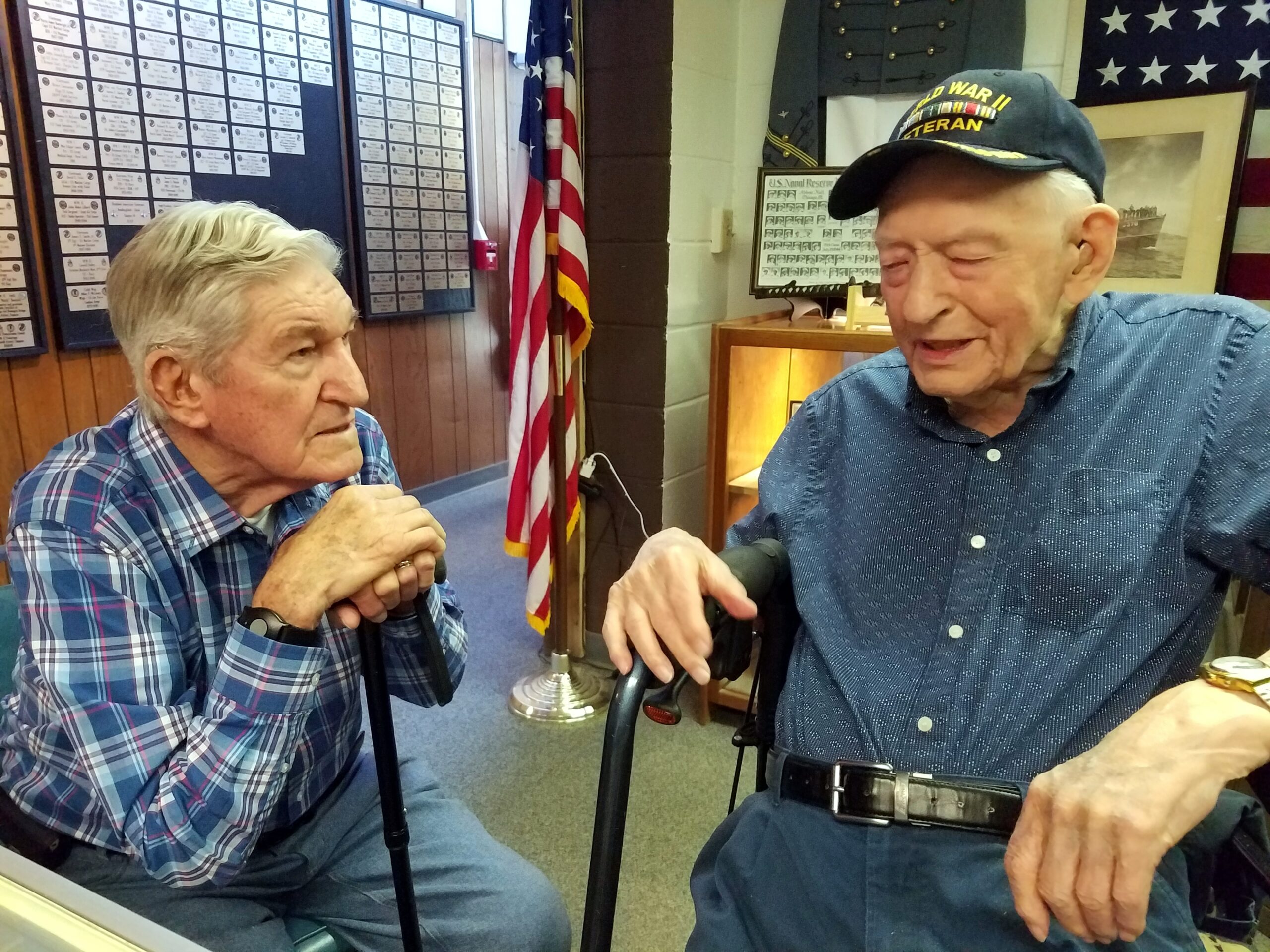 Carl: We made sure to ask visitors and volunteers about what artifacts they thought were most important for us to feature. Each gallery has about four or five artifacts that are captured in shorter videos, and when you put all those together for the full documentary, it gives a beautiful, broad perspective of war. People have said things like, “My father was in World War II, and I never knew what he did because he would never talk about it.” One of the great things about the museum, and Through Their Eyes, is that it gives us a chance to connect and introduce visitors to history in ways they haven’t before experienced.
Carl: We made sure to ask visitors and volunteers about what artifacts they thought were most important for us to feature. Each gallery has about four or five artifacts that are captured in shorter videos, and when you put all those together for the full documentary, it gives a beautiful, broad perspective of war. People have said things like, “My father was in World War II, and I never knew what he did because he would never talk about it.” One of the great things about the museum, and Through Their Eyes, is that it gives us a chance to connect and introduce visitors to history in ways they haven’t before experienced.
How has the community responded to Through Their Eyes?
Michel: We’ve had two full-length screenings at our local movie theater, as well as a special show for middle and high school students. The students actually cheered at the end. Some were in tears. One student came up to me and said, “My grandpa was in Vietnam. I never knew Vietnam soldiers were treated like that.” Comments from members of the community were all positive. A WWII veteran told me, “Every American should see this movie.” To me, that was the best comment we could have asked for; it proves these stories are important.
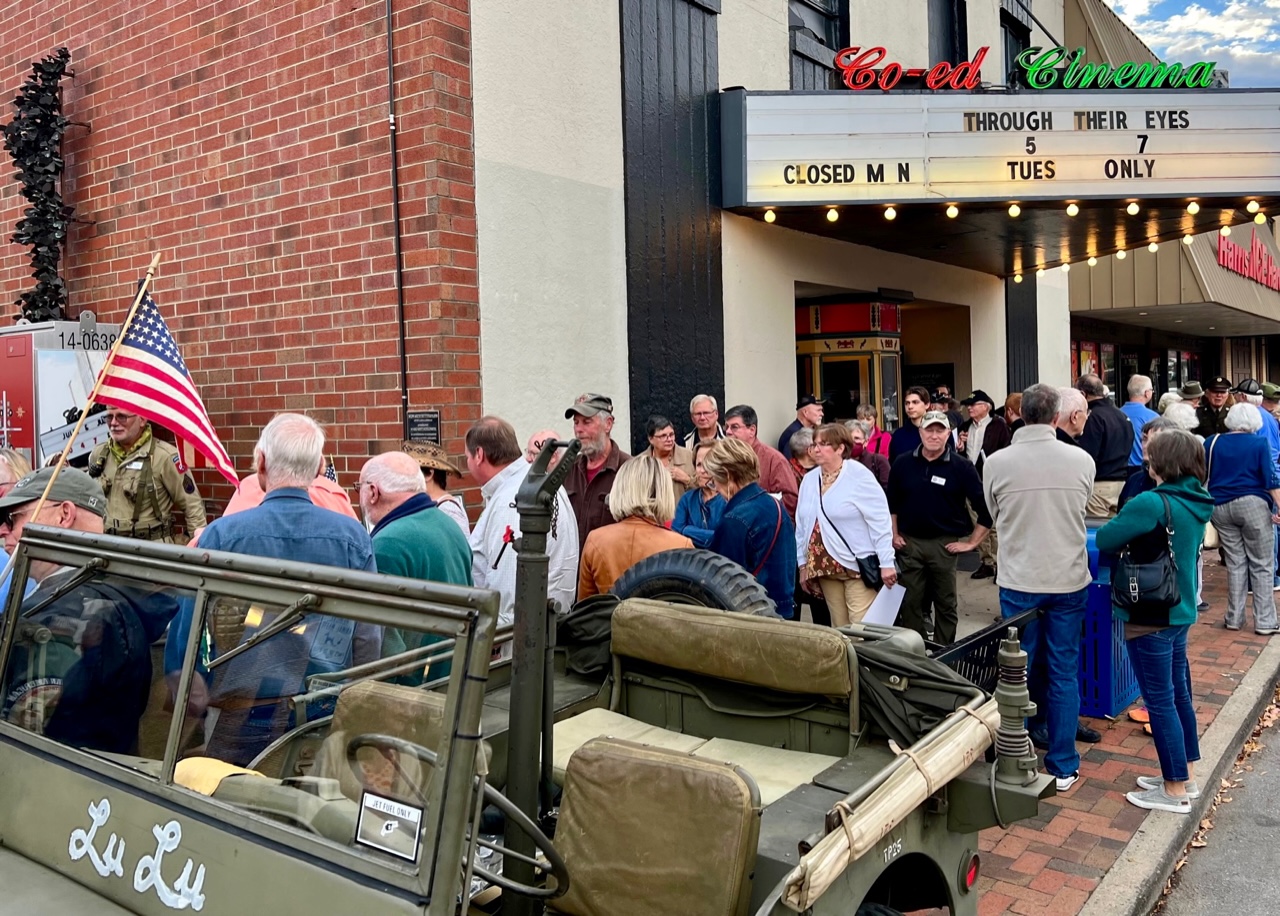
What’s Next for Through Their Eyes?
Michel: We’re taking Through Their Eyes on the road! So far, we’ve screened it at a local church, our county library, and Rotary club meeting, and we’ll have a screening in Hendersonville and a veterans assisted living facility in Asheville in a couple weeks! After watching the film, if others want to screen the film in their area, please call me at 828-506-6603. We want everyone in North Carolina to see it and hear these stories.
Carl: We’re also incorporating interactive videos into our museum’s library. We have a TV screen which will loop interviews we have with combat veterans from World War II, Vietnam War, and the War on Terror. We hope to have an interactive ability where visitors can push a button and search a topic of interest. This will be a new way to experience these stories.
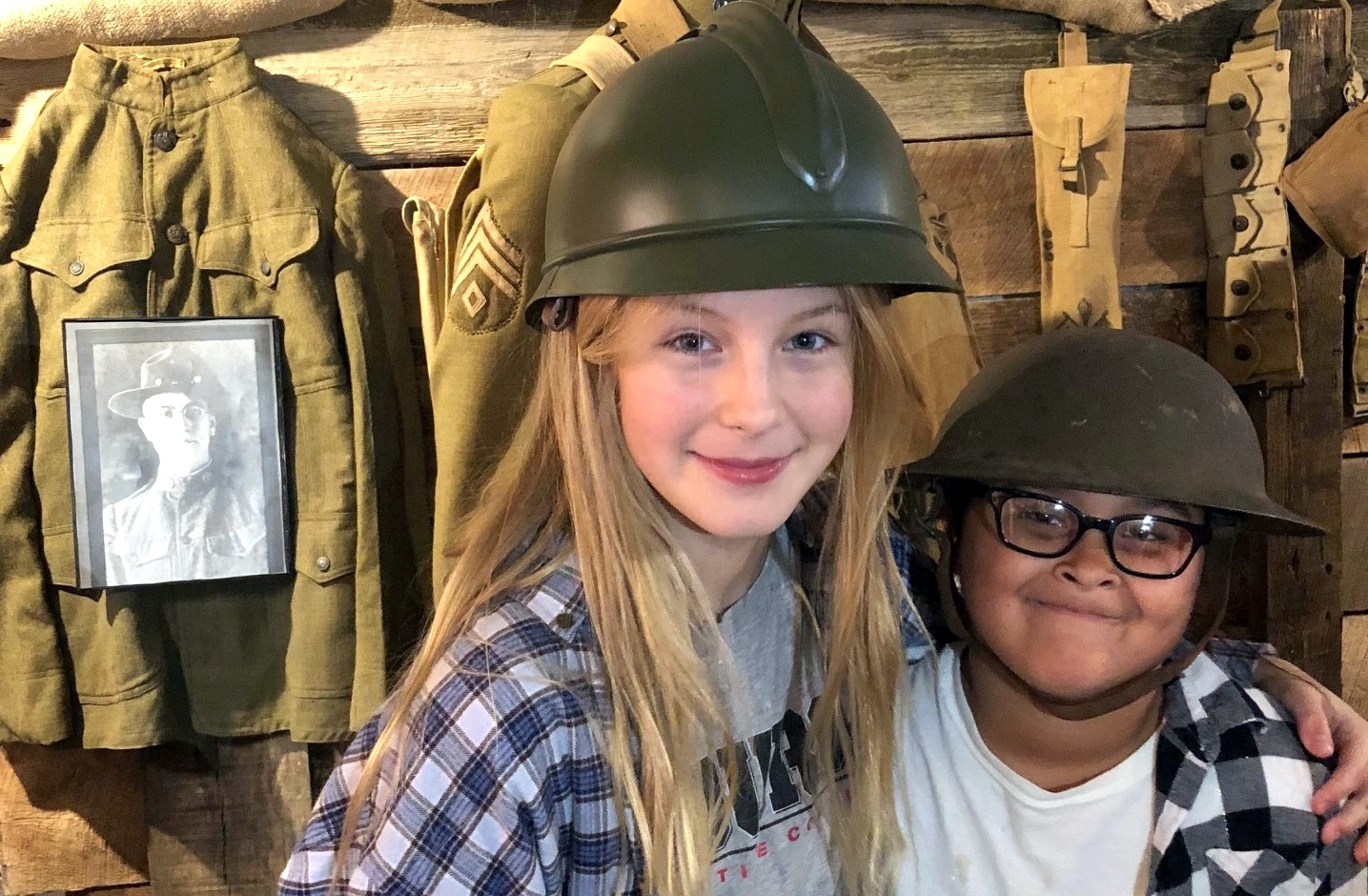 Why do you think the humanities, museums, and cultural institutions are important?
Why do you think the humanities, museums, and cultural institutions are important?
Michel: Museums are vital institutions because they preserve our history and stories. They encourage creativity, discourse, and critical thinking. They help us learn about who we are and why we respond the way we do to things. The humanities are a beautiful part of life and without them, we would be a very sad society.
Carl: I can’t think of anything that we should appreciate more in this country than the veteran whom we owe so much to. Living in North Carolina and working with the veteran is such an honor.
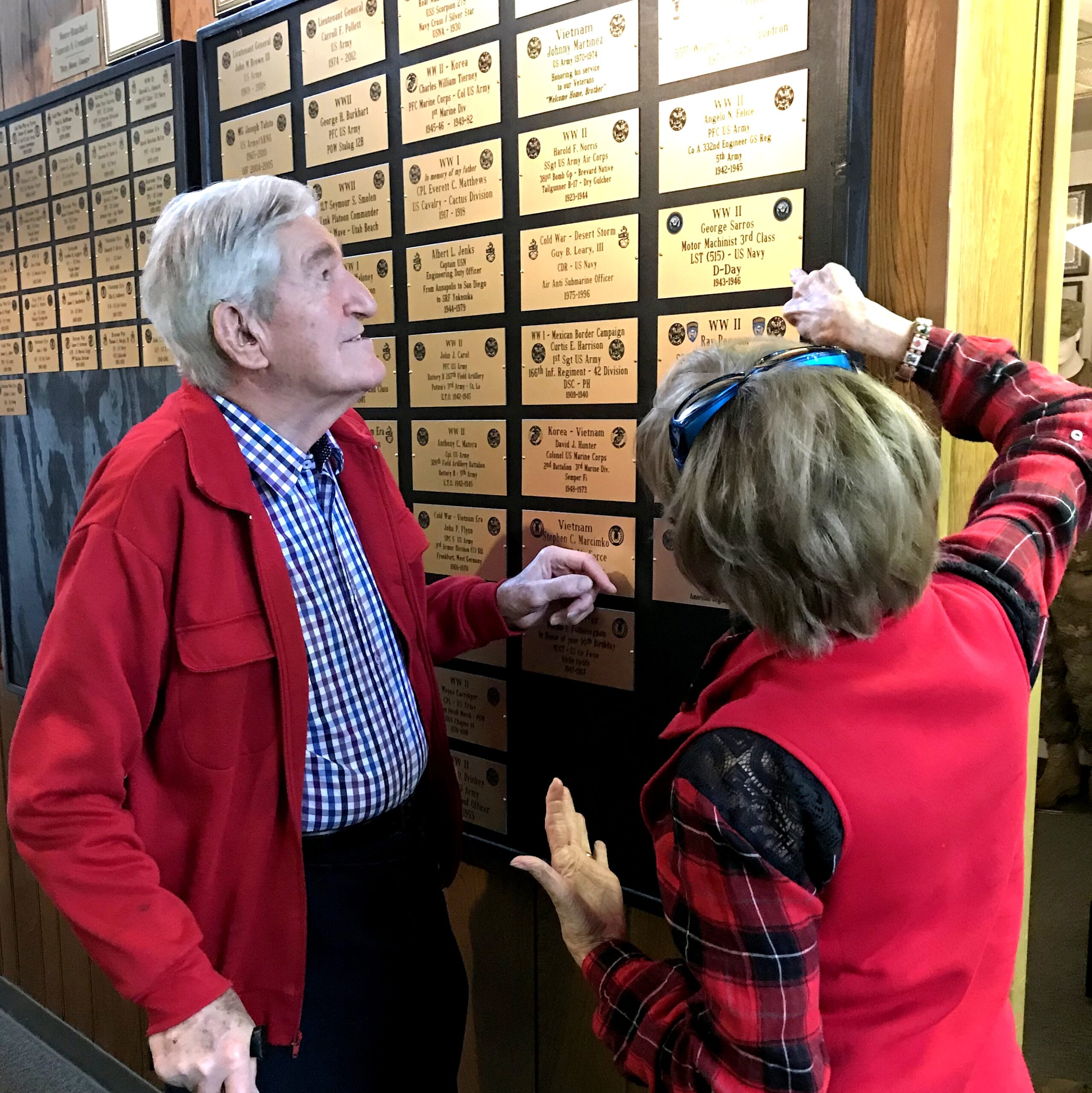 How can people support VHMC?
How can people support VHMC?
Michel: We are a 100% volunteer-run museum. Admission is free, so we rely on our supporters. Donations can be made at www.theveteransmuseum.org. We also encourage everyone to visit and support our commemoration wall which honors the service of living and deceased veterans. Families and loved ones of veterans, or the veterans themselves, can purchase a plaque either in the museum or on our website.
About North Carolina Humanities’ Grantee Spotlights: NC Humanities’ Grantee Spotlights shine a light on the incredible work of our grantee partners, offering details about their funded project, and feature a Q&A with a team member(s) associated with the organization.
This interview has been edited for length and clarity.
Photo Credit: Veterans History Museum of the Carolinas. Documentary Poster; Through Their Eyes project team at the film’s premiere at Coed Cinema in Brevard, 10-25-22. L-R: Carl Newman, Susan Toscani, Joni Pavlik, Michel Robertson; WWII-European Theater Gallery; WWII veterans sharing stories; Audience after seeing the film; Children trying on helmets in the WWI gallery; Volunteer Janis Allen pointing out his Honor Wall plaque to D-Day veteran George Sarros.


